
The subterranean catacombs that contain the mummified remains of about 8,000 ancient inhabitants of Palermo may be macabre, but are fascinating to visit. The Capuchin friars began mummifying and embalming the bodies of the city's nobles back in 1533, and the tradition continued for centuries with the last body (a seven-year-old girl named Rosalia) being embalmed in 1920. After embalming, the corpses were hung along the walls of the catacombs dressed in their best, which they still wear proudly, like the military officer in an 18th-century uniform complete with tricorn hat. The bodies are arranged according to profession, sex and age, with separate sections for virgins, children and lawyers, among other things. The tunnels are spooky and the experience can be quite emotional; the catacombs are cool and dimly lit and the atmosphere is one of respect and care for the ancestors, but although fascinating, this attraction will be disturbing for some. It is very interesting to learn about how the monks embalmed the bodies and the reasons why everything is so well-preserved, and the outfits are authentic reflections of local history. Photography is not allowed at all and visitors should treat the place with respect, keeping noise to a minimum.
Address : Piazza Cappuccini 1, Palermo
Website : www.palermocatacombs.com/
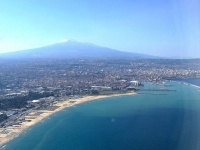
Catania is an ancient city, founded in 729 BC. The second largest city in Sicily, Catania sits in the shadow of Europe's highest volcano, Mount Etna, on the east of Sicily between Syracuse and Taormina. It was once called the 'city of black and white' because of the use of white marble and black lava to construct its elegant buildings, many of which have since fallen into ruins or been destroyed by war, earthquakes and lava flows.Catania boasts some interesting historical relics. There are two Roman amphitheatres, one reminiscent of Rome's Colosseum, and a 13th-century fortress, Ursino Castle, which is now a museum. The city's cathedral contains some royal tombs and was built in the 11th century. The historic downtown area, much of which dates back to the 17th-century, is a UNESCO-listed site. The city is also a great transport hub and has an active nightlife.Visitors will find plenty to do in Catania and the city certainly has attractions, but in summer tourists should beware. Catania is regarded as the hottest city in Italy, with temperatures often soaring to 104ºF (40ºC).
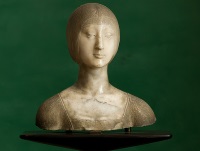
Palermo's largest art museum, devoted to medieval works, is housed within the Gothic-styled Palazzo Abbatellis (built in 1488). The collection is fascinating and includes several particularly interesting works. The Bust of Eleanor of Aragon by Francesco Laurana, for example, dates from 1471 and is considered to be the epitome of Renaissance Sicilian sculpture; while the beautiful masterpiece painting Our Lady of the Annunciation is considered Antonello da Messina's greatest work. Also renowned is the chilling Triumph of Death fresco by an unknown 15th-century artist that covers an entire wall. The art is wonderful but so is the building, and you get a good sense of the layout of the palace as you wander from room to room. Unfortunately, there are no audio guides and scant information at the gallery so it is best to bring your own research with you to appreciate what you are seeing. There is a library and a bookshop at the palace, and guided tours are usually available, but they tend to be in Italian only. No photography is allowed.
Address : Via Alloro 4, Palermo
Website : www.regione.sicilia.it/beniculturali/palazzoabatellis

One of Palermo's most unique attractions is the engaging Museo Internazionale delle Marionette, a museum dedicated to the art of puppetry, an age-old Sicilian form of entertainment. The Opera dei Pupi of southern Italy is famous and Palermo, Catania and Naples all have distinct marionette traditions which are fascinating to witness. Free shows are often put on in summer, but the museum collection itself, the greatest of its kind in the world, is entertainment enough. The museum was opened in 1975 to preserve local traditions and the collection consists of more than 3,500 puppets. Adjoining the museum is the library of Guiseppe Leggio, which houses about 3,000 books on puppetry and folk traditions; there is also a video library documenting theatrical folk performances and puppet shows from different cultures. Most of the antique puppets on display evoke Norman Sicily, representing chivalrous heroes and Saracen pirates, knights, ladies and troubadours. The collection includes puppets from all over the world, including the Far East and even some English 'Punch and Judy' dolls. The museum will delight children and interest adults and is a great attraction for those travelling to Palermo with kids. Try to catch a show to see the puppets come to life!
Address : Via Butera 1 (around the corner from the Palazzo Chiaramonte), Palermo
Website : www.museomarionettepalermo.it
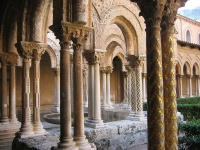
Of all the many architecturally beautiful and fascinating places of worship in Palermo, the most renowned is the 12th-century cathedral in the suburb of Monreale, high on the mountain slope, about five miles (8km) from the city centre. This dazzling cathedral is a mixture of Arab, Byzantine and Norman artistic styles, a blend of medieval Christian and Muslim architecture. The magnificent mosaics that cover 68,243 square feet (6,340 sq m) of the cathedral's dome and all of the walls on the interior are unsurpassed and people travel from far and wide to study and admire them. The adjacent Benedictine abbey features a cloister with 228 carved stone columns, many inlaid with mosaics depicting scenes from Sicily's Norman history. For a small fee you can buy a schematic of the mosaics from the stall at the main entrance, which explains the biblical and historical scenes depicted; having this guide, or doing some research before arriving, is advised because there is so much of interest going on in the intricate and extensive mosaics - some visitors even make a point of bringing binoculars to examine them properly. Entrance to the breathtaking cathedral is free, but there are small admission charges for the Treasury, Cloisters and Terraces, all of which are well worth exploring.
Address : Piazza Vittorio Emanuele, Monreale
Website : www.sacred-destinations.com/italy/monreale-cathedral

Sicily's greatest natural attraction is the (very) active volcano, Mount Etna, which has been spewing lava and shaking the earth for centuries, most recently in 2008, while ash eruptions occur almost continuously. About 20 miles (32km) from Catania, the craters below the summit can be reached from the town of Piano Provenzana at the base by bus or on foot. This town also serves as a ski resort in winter, and during summer is a base camp for hikers intent on enjoying the wooded scenery and exploring the interesting caverns in the area. Various species of oak and stone pine, birch and beech trees cover the lower mountain slopes, while frogs, toads, tortoises and Sicily's ubiquitous lizards hide in the forest streams. Foxes, weasels, squirrels and other small mammals stalk the forests and a plethora of bird species fill the trees and the Gurrida Lake area. The lovely flora and fauna are an extra bonus for hikers exploring the area, and the volcanic activity attracts photographers. Mount Etna features rather prominently in Greek mythology and has been captivating people for centuries; it is one of Italy's most famous natural features and a playground for adventurers of various kinds.
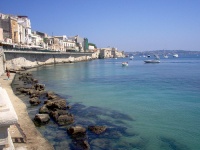
The Ponte Nuova (New Bridge) connects the mainland city of Syracuse to the island of Ortygia, where most of the area's worthy sights are located. The island was fortified by Greek colonists and the remains of the Temple of Apollo can still be visited in the Piazza Pancali: this is the oldest Greek temple in Sicily, built in the Doric style around 565 BC. The cathedral in the nearby Piazza Duomo is uniquely made up of the original walls of a 5th-century BC Greek temple known as the Athenaion, and near the sea, reached along Via Capodieci, is the mythical Spring of Arethusa. There are medieval relics on the island too, including Maniaces Castle, dating from the 11th century. Apart from the many historic sights, the island of Ortygia also offers numerous boutiques and craft shops, and restaurants and cafes galore. The winding streets are charming and there are treasures to be found around many corners. Walking is the best way to get around on Ortygia as the narrow, winding streets can be difficult to navigate by car and parking is often scarce. Several hours are required to explore the island fully. Be sure to bring along the camera as the island is delightfully picturesque.
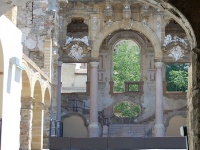
The excessive opulence of the Baroque period is nowhere better demonstrated than in the magnificent Palazzo Mirto, one of the few aristocratic homes of Palermo that is open to the public, offering visitors a glimpse into the lifestyle of Sicily's noble 19th-century families. The palace was the residence of the Lanza Filangeri family, whose last heir left the estate to the Ministry of Cultural Assets in 1982. Most of the princely rooms and salons are furnished with original items that once belonged to the family. Apart from the luxurious rooms and many antiques visitors can see the old stables and wagons used by the family. Unfortunately, all the signs and information given are in Italian, and as a result some personal research into what you are seeing may be necessary for enthusiasts, but the real joy of this attraction is the feeling that you are wandering around somebody's home and the lack of information won't bother many visitors. There are guided tours available. The feeling of visiting a home is amplified by the fact that the palace is not thronged by tourists, many of whom don't know it exists. Opening hours seem to be irregular, with some recent visitors complaining as much, so it is best to check whether it is open in advance. Photography is not allowed.
Address : Via Merlo 2, Palermo (off the Piazza Marina)
Website : www.casemuseoitalia.it/en/Museum.asp?POIID=28
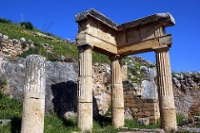
The Roman ruins at Solunto overlook the coast near Santa Flavia, on the slopes of Mount Catalfamo. The site was originally a Phoenician village that was expanded by the Greeks who conquered it in 396 BC. By 255 BC it had fallen to the Romans, who rebuilt much of the original town. No complete structures remain and the ruins consist mainly of floors and the lower portions of walls and columns. Portions of mosaics and paintings are still visible and really exciting to stumble upon. An impressive view of the Gulf of Palermo can be had from the hilltop above Solunto, and there is a small archaeological museum at the site, although most of the artefacts from Solunto are in Palermo's Regional Archaeological Museum. The ruins are picturesque and interesting and they are beautifully situated. Solunto usually doesn't get a lot of coverage in guide books which means that this breathtaking site can often be explored in relative solitude. It can get hot on the slopes so it is best to avoid the heat of midday, and be sure to bring comfortable shoes as you will need to do some walking if you want to see everything. Even without the exciting archaeological remains, the area would be wonderful for a hike, and worth visiting for the views alone.
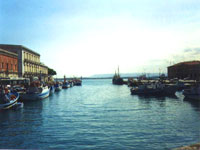
Visitors to Syracuse may be forgiven for wondering whether they are on holiday in Italy or Greece. This city on the southeastern corner of Sicily's Ionian coastline once rivalled Athens as the most important city in the ancient Greek world. Its Greek heritage can still be found in abundance in both the ruins of buildings older and more splendid than the Parthenon and in the myths and legends centred particularly on its oldest quarter, the island of Ortygia.Archimedes once strode the streets here and today tourists who stroll around the Neapolis Archaeological Park on the Terminite Hill can still get a feel for Syracuse's golden age of power and prosperity. As well as the Hellenic relics, Syracuse also boasts more than its fair share of Roman ruins and some fine medieval Gothic architecture and art, all treasures to be singled out from among the uninspiring high-rises and motorways that make up the modern city. Parking is a problem in the city, particularly on Ortygia where most of the medieval sights and the best shops are located, and the heat can become unbearable in the height of summer; however, no holiday in Sicily is complete without exploring the antiquities of Syracuse. Most visitors prefer to make day trips to the city from the more comfortable resort areas nearby, where soft white beaches and fine wines can be enjoyed on the shores of the Ionian Sea.
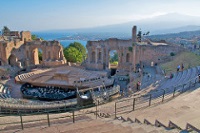
Sicily's most famous holiday resort town, Taormina, was the 19th-century haunt of British aristocracy and the place chosen by D H Lawrence to write his erotic novel, Lady Chatterley's Lover. The town boasts what is surely the most photographed view in Sicily, across the beautiful ancient Greek amphitheatre to the sea with Mount Etna in the background. Inhabited since before 734 BC, when the Greeks arrived on the Sicilian coast, Taormina is an ancient town.Taormina today remains Sicily's favourite holiday destination with its winding medieval streets and tiny passages hiding some great restaurants, cafes and ice-cream parlours, some hidden in secluded gardens and others in pleasant squares or on terraces with sea views. It is a great place to shop, too, with thousands of boutiques selling crafts, fashion, jewellery, ceramics, mosaics and porcelain dolls. A popular beach is at Giardini-Naxos, a few miles away, and a funicular connects the old town to the coastal area of Mazzaro below. The stone walls of the old city, situated on a plateau, enclose some fascinating archaeological monuments and medieval palaces, including the Palazzo Santo Stefano. Popular for many decades, as a holiday destination Taormina still has it all: stunning surroundings, lovely nearby beaches, medieval charm, great shops and restaurants, and interesting archaeological remains.
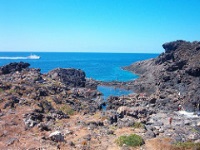
An underwater city and a landscape of petrified black lava are the characteristics of the unusual little island of Ustica in the Tyrrhenian Sea, just a short ferry ride of 36 miles (57km) from Palermo. The ancient volcanic island was once inhabited by the Phoenicians and often fell prey to pirate raids during the Middle Ages; there is evidence of many shipwrecks off the island and the Greeks believed it was inhabited by sirens that lured ships to their doom on the rocks. Ustica has been inhabited since the Paleolithic era and notable archaeological remains have been uncovered. The Phoenicians, Greeks, Carthaginians and Romans all left their mark on the landscape. In the 20th century Ustica became a penal colony but in 1961 tourists officially replaced prisoners. Today, the island is a designated national marine park and its crystal-clear waters and undersea treasures, particularly the submerged ancient city of Osteodes, attract divers from all over the world. The snorkelling is also brilliant, as the waters around the island teem with marine life. Every year in July the island is the venue for an International Underwater Activity Show. Ustica is a delightful excursion which can occupy visitors happily for one to two days, but unless you are an avid diver, you won't need more time than that to explore the island.
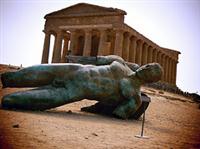
Although not technically a 'valley', but rather a ridge located just outside the Sicilian town of Agrigento, the Valley of the Temples (Valle dei Templi) is one of Italy's oldest and most interesting archaeological sites. Declared a UNESCO World Heritage Site in 1997, the Valley of the Temples is filled with some of the most outstanding examples of Magna Graecia architecture in the world. The Doric-styled structures, built in the 5th century BC, are dedicated to gods and mythological characters, including, quite rarely, an imposing structure dedicated to Vulcan. There are also some fascinating commemorative structures, built in celebration of Rome's victory over Carthage, and in memory of Roman soldiers who were killed in the Second Punic War. In the tradition of Greco-Roman architecture of the period, all the structures face east to be illuminated by the rising sun. The 'valley' is actually divided into two distinct sections: the Hill of Temples and, on the other side of the parking lot, another grouping of temples including the Temple of Zeus, but the admission charge covers everything. A must-see tourist attraction in Sicily, the site of the Valley of the Temples commands great views of Agrigento and makes for a wonderful half-day adventure.

01474 814411

Travel Guide powered by Word Travels, copyright © 2023 Globe Media Ltd. By its very nature information in this travel guide is subject to change at short notice and travellers are urged to verify information on which they're relying with the relevant authorities. Neither Globe Media Ltd nor Travel Vogue can accept any responsibility for any loss or inconvenience to any person as a result of information contained above.